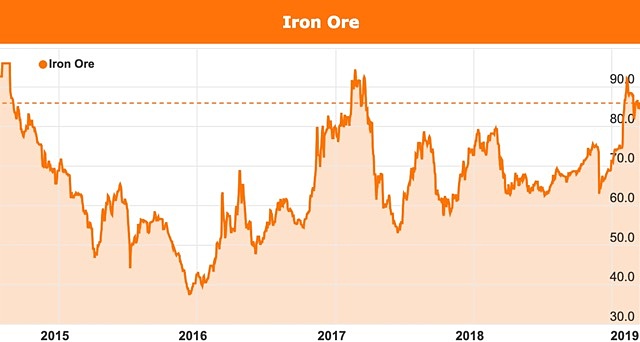Time for big Morrison “iron ore” tax cuts?

For every US$10 above the iron ore price estimates from the Treasury, around A$3-4 billion is added to the budget’s bottom line over the course of a full year.
The polls and the betting agencies might have Scott Morrison’s Government at very long odds to win the Federal election due in May but he does have one secret weapon in his kit bag.
The 2 April budget is looming and like all governments in trouble, this is one last chance to dazzle or bribe the electorate with some timely tax cuts and hopefully win back some marginal voters.
What has been largely ignored is that the government may have considerably more ammunition to roll out tax cuts than was expected even a few months ago.
Iron ore price boost adds to spending power
As we have pointed out before, this election could be a great one to win because the unexpectedly strong iron ore price will deliver a windfall to the budget coffers, as well as to the big iron ore players BHP (ASX: BHP), Rio Tinto (ASX: RIO) and Fortescue Metals (ASX: FMG).
Some estimates put the size of the iron ore surge to the budget as high as $6 billion, depending on long term forecasts, which is a tidy sum to pour into some tax cuts or a bigger and earlier budget surplus than had been forecast.
AMP Capital chief economist Shane Oliver has estimated that the iron ore boost could be between $2 billion to $4 billion in the current financial year alone as the tax take on the big miners grows.
That unexpectedly high iron ore price is well above the government’s forecasts, in part due to the major tailing dam collapse in Brazil in January which boosted demand for Australian iron ore.

The iron ore price has staged positive gains early on in 2019.
Every US$10 difference above the iron ore price estimates by Treasury expectations adds around A$3 billion to A$4 billion to the budget bottom line over a full year, although there is obviously a lag between miners getting higher prices and that revenue being translated into a higher tax take.
Plenty of revenue to play with
With that sort of budget boost, there should not be any impediment for Scott Morrison to announce some bigger tax cuts than those already legislated and also reveal a sound overall budget position, while also lifting his own government’s economic credentials.
In some senses the government has very little to lose in promoting a bidding war for voters – if it doesn’t work then the economy is somebody else’s problem and if it does, there is still enough wriggle room to claw back some cash in the first budget of the next term.
The 2018 budget forecast the price of iron ore at US$55 a tonne but it has been somewhere between US$80/t and US$85/t for the past month and has been sitting comfortably above US$65/t since September.
Of course, what goes up can come down and the iron ore premium above treasury estimates could always diminish or even disappear altogether, although that seems unlikely given the tragic tailings dam collapse in Brazil.
That incident caused the confirmed deaths of 201 people, with 107 still missing and is expected to slice many millions of tonnes from Vale’s Brazil production, potentially for several years.
